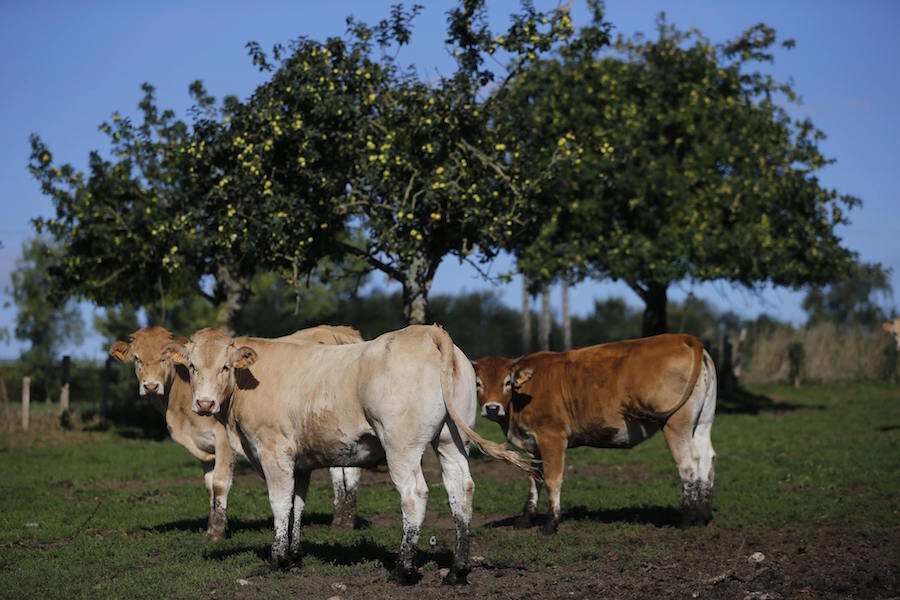Intensifying agriculture threatens soil diversification
The U.N. General Assembly declared 2015 the International Year of Soils (IYS) to increase awareness and understanding of the many important roles of soil. One of these roles is the provision of ecosystem services by the communities of microorganisms that live in soil.
Food Tank interviewed Dr. Maria A. Tsiafouli, lead author of a study on soil biodiversity and agricultural intensification published in Global Change Biology.
The overall message: Land use intensification—an increase in the amount of agricultural products gained from each unit of land—reduces the complexity of soil food webs across Europe.
The research: The authors found significant effects of land use on functional and taxonomic groups of soil, concluding that the stability of this relationship across agricultural regions could imply loss of soil biodiversity at continental scales. The article discusses how these changes in soil biodiversity, which arise from land use intensification, threaten the functioning of soil and agricultural productivity. The results were consistent across soil samples from regions with differing climatic conditions and soil types, and impacts to almost all aspects of soil food web diversity were identified.
Food Tank (FT): Why is your research relevant for the transition to sustainable agriculture? What are two key points of your paper?
Maria Tsiafouli (MT): Sustainable agriculture depends on the delivery of ecosystem services, which in turn depend on processes that are supported and regulated by soil biodiversity. Our study showed that intensive agriculture reduces soil biodiversity, such that food webs become less diverse and are composed of smaller-bodied organisms. Awareness of the impacts of agricultural intensification on soil biodiversity convinces us that changing over to sustainable production systems is necessary for securing a sustainable future for food and public health.
FT: How would you describe the results of your paper to a layman?
MT: Soil is a living organism. When it is healthy, it provides us with important services and products. Intensive agriculture, especially when combined with annual tillage, is killing a significant portion of organisms and makes soil less healthy. This means that agricultural products and ecosystem services are under threat. Constant care for the soil, which requires labor and money, is needed to keep a certain level of productivity in the fields.
FT: Could you explain in laymen's terms the importance of conserving soil taxonomy and functional groups to the productivity of intensive agriculture?
MT: Soil organisms are the workers in the factory of soil that produces goods and services. In the soil factory, as in any other factory, several kinds of organisms (functional groups) are on the production line while some others control their work. Each functional group has specific skills and is significant in some way for the overall efficiency of the factory. Conserving soil biodiversity is essential to make all these important functional groups stay in the soil and continue working.
FT: At the end of the paper, you write that future studies need to promote and evaluate innovative management practices for simultaneously maintaining soil biodiversity and yields. Are you referring to specific practices? What might this vision look like?
MT: We know now that soil biodiversity is important and that it is threatened by intensive agriculture. But there are several forms of intensive agriculture and several degrees of intensities. Agricultural land should be regarded as an ecosystem that has several functions and research should focus on how to combine both modern and traditional management practices on a case-specific basis to make these ecosystems work in a multifunctional way.
FT: We found your paper very exciting, because it seems to be one of the few that works to value the ecosystem services of soil functional groups. But some people say there is no need to assign a value to soil taxonomy, as it is already valued in the “benefit” or total value of the crop; that this is essentially “double counting.” How do you view this claim?
MT: The value of soil organisms does not only rely on what we get from the soil in the form of products but also in the ability of soil to provide goods and services in the future, which is threatened by climate change. It is more a matter of future food security and public health than the actual price of crops that are produced using soil.





